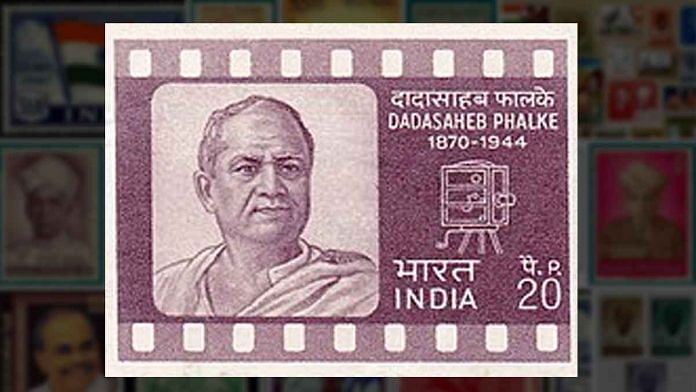Dhundiraj Govind Phalke directed, produced, wrote and shot India’s first film, Raja Harishchandra (1913), in which he selected a man to play the role of a woman and his son to play the role of the protagonist’s child.
Even though India’s first motion picture was nothing less than jugaad, it marked the beginning of Indian cinema which is now the world’s largest.
Phalke, called the ‘Father of Indian cinema’, brought magic on screen through motion pictures and India was charmed.
Today, the Dadasaheb Phalke award, the highest honour in cinema accorded by the Indian government, stands as testimony to what Phalke meant for films in India.
On his 75th death anniversary, ThePrint look takes a look at Phalke’s life and contribution to Indian cinema.
Also read: Kartar Singh Duggal, the creative genius hailed as master of the Punjabi short story
From ASI to films
Phalke was born on 30 April 1870, Trimbak, Nashik in Maharashtra. He completed his education from Sir J.J. School of Art in Mumbai in 1885 and went to Kala Bhavan at Maharaja Sayajirao University, Baroda, Gujarat, where he learned sculpting, drawing, painting and photography.
For a brief period, Phalke worked as a painter in Baroda and then as a photographer in Godhra, where he lost his son and wife to a bubonic plague and decided to return to Maharashtra.
Before starting his career as a filmmaker, Phalke took a lot of detours. From working at a printing press to the Archaeological Survey of India (ASI), he did several jobs.
In The Phalke Era: Conflict of Traditional Form and Modern Technology, Ashish Rajadhyaksha wrote that Phalke worked with painter Raja Ravi Varma in 1890s at his lithography press that led to Phalke establishing his own printing press.
After some time Phalke decided to visit Germany to learn new techniques of printing and update his equipment. He returned to start one of India’s foremost press. However, unable to work with his partners later, Phalke decided to resign.
The turning point for Phalke came when he watched the French silent film, The Life of Christ (1903).
Rajadhyaksha quoted Phalke as saying years later, “I was gripped by a strange spell, could this really happen?”
Phalke then read and watched everything on film-making. He went to England, bought a “Williamson camera, a perforator, and some Kodak film,” wrote Rajadhyaksha. He loaned money and pawned his wife’s jewellery to gather funds for his first film.
Also read: Pran, the most popular Bollywood villain who often carried more weight than the hero
India’s first film
Phalke made his first full-length 40-minute silent film, Raja Harishchandra, a mythological film about the eponymous righteous king, in seven months and released it on 3 May 1913. The film worked its magic on viewers across India and started Phalke and India’s journey into film-making.
Phalke believed in the possibility of the film industry benefitting from the ongoing Swadeshi movement at the time. He was aware that of the fact that he could be in the middle of making history.
In the next couple of decades, he made 95 films, mostly mythological, and over 20 short films. These included Mohini Bhasmasur (1913), Satyavan Savitri (1914), Shri Krishna Janma (1918), Rajrishi Ambarish (1922), Guru Dronacharya (1923), Draupadi Vashtraharan (1927), Sant Mirabai (1929), Kabir Kamal (1930), among others.
In one of his films Lanka Dahan (1917), actor Anna Salunke played the roles of Lord Ram and Sita from the epic Ramayana. It was the first instance of double-roles in Indian cinema.
Phalke’s success propelled others across the country — Calcutta (now Kolkata), Poona (Pune), Bombay (Mumbai) and Kolhapur — to try their hand at film-making (mostly mythologicals), resulting in what later became the larger Indian film industry.
Later life
Over the course of his film-making career, Phalke found a partnership in Hindustan Cinema Films Company. However, the profit-making motive of the business didn’t appeal to his creative sensibilities and he parted ways in the ’20s. After this, he retired and settled in Kashi (now Varanasi).
He later returned to film-making to make a couple of films — one of them, Gangavataran (1937), turned out to be his first sound film. It was also the last film he directed.
Phalke spent the last years of his life in Nasik and died on 16 February 1944.
His stature was such that in 1969, in recognition of his historical contribution to Indian films, the government of India constituted the Dadasaheb Phalke Award for lifetime achievement.
In 2009, a Marathi biopic, Harishchandrachi Factory, was made on the life of Phalke and focused on the struggle behind the making of India’s first film. It was India’s official submission for the Oscars.




